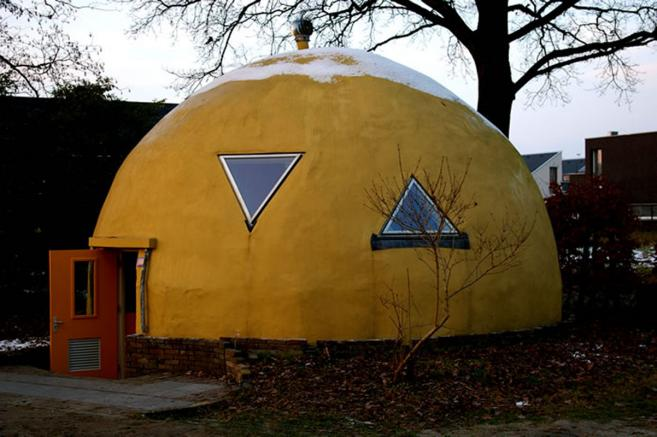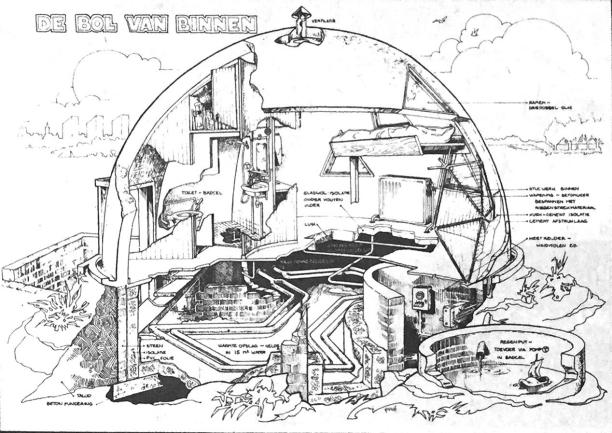Year: 1972
Designer: Jaap’t Hooft, Boxtel
Location: the Netherlands
Introduction: The Autonomous dome was designed to be highly self-sufficient and cheap, while still contributing a living space with necessary amenities and comfort. While most other projects aiming for autonomy at the time were polarized between high cost solutions for high comfort dwellers and low cost solution for low-comfort groups, the autonomous dome explored a compromise. While not completely autonomous, the compact house maintained essential amenities and comfort for one or two occupants and had a cost of only $3-4000 (Harper,“The Autonomous House”).

- Structure: The dome form feels more spacious than a rectangular form of the same volume. The placement and number of windows are strictly designed. It also signifies the connection between the earth, the cell, and life. There is a lot of discussion about the form behind it.
- Function: Belt tightening means reducing the size of the house and concentrating energy where it is needed can help reduce energy demand. “Low light-levels can be made more effective by focusing the light where it is needed”(Harper, 1976, p. 145). Low ventilation rates are better sustained if the air is freshened by charcoal filters or ultraviolet lamps.
- Electricity: It is almost energy self-sufficient and can supply its own water, electricity, gas, heat and dispose of its waste. But the several conversion systems and units needed to maintain energy autonomy are supplied through the outside world, and the dome’s infrastructure – including the digester, solar collectors and wind turbine – is not integrated into the body of the house, but is scattered throughout the experimental farm. The biogas digester requires pig manure from a neighboring farm to operate.



Leave a Reply